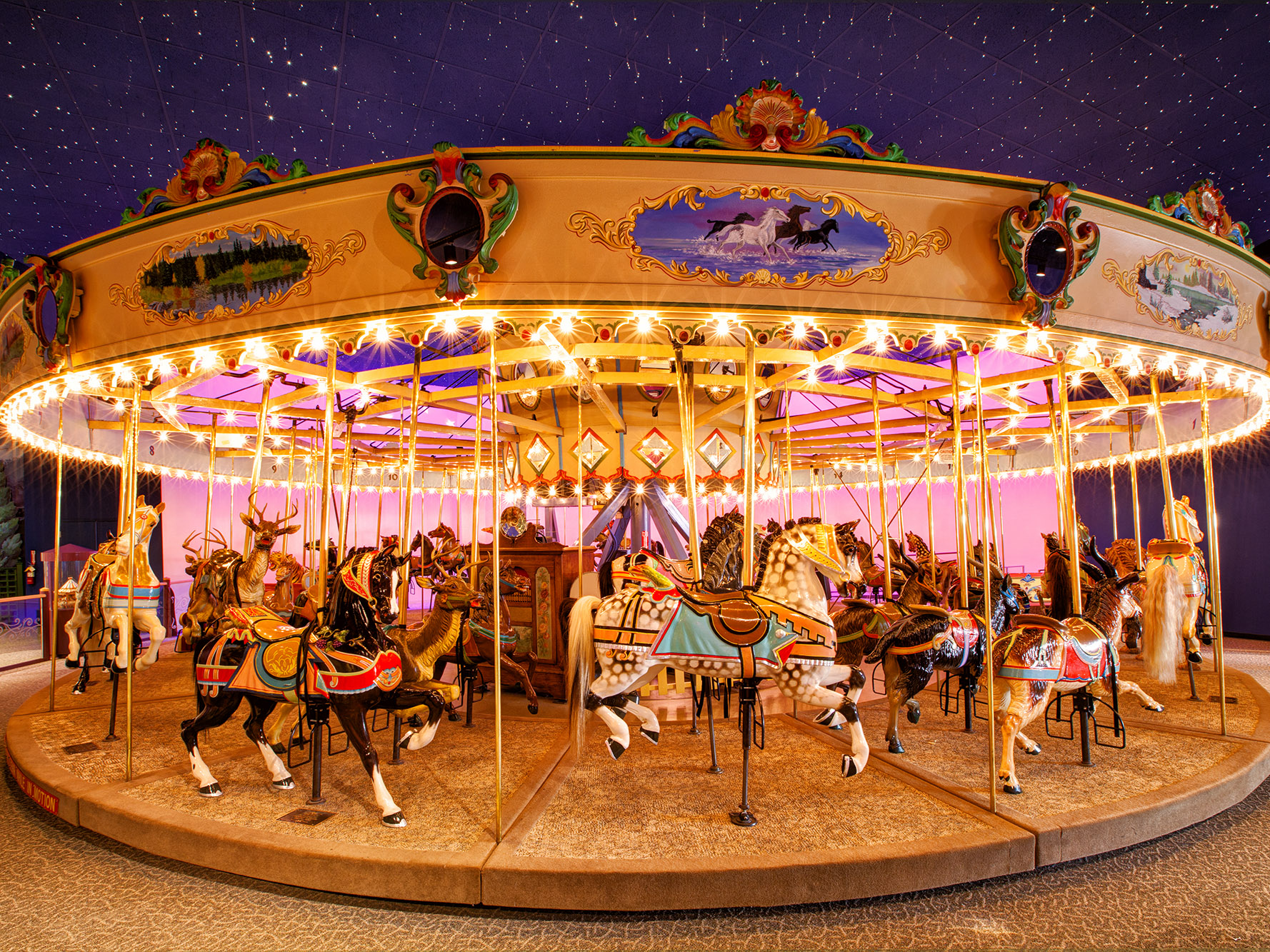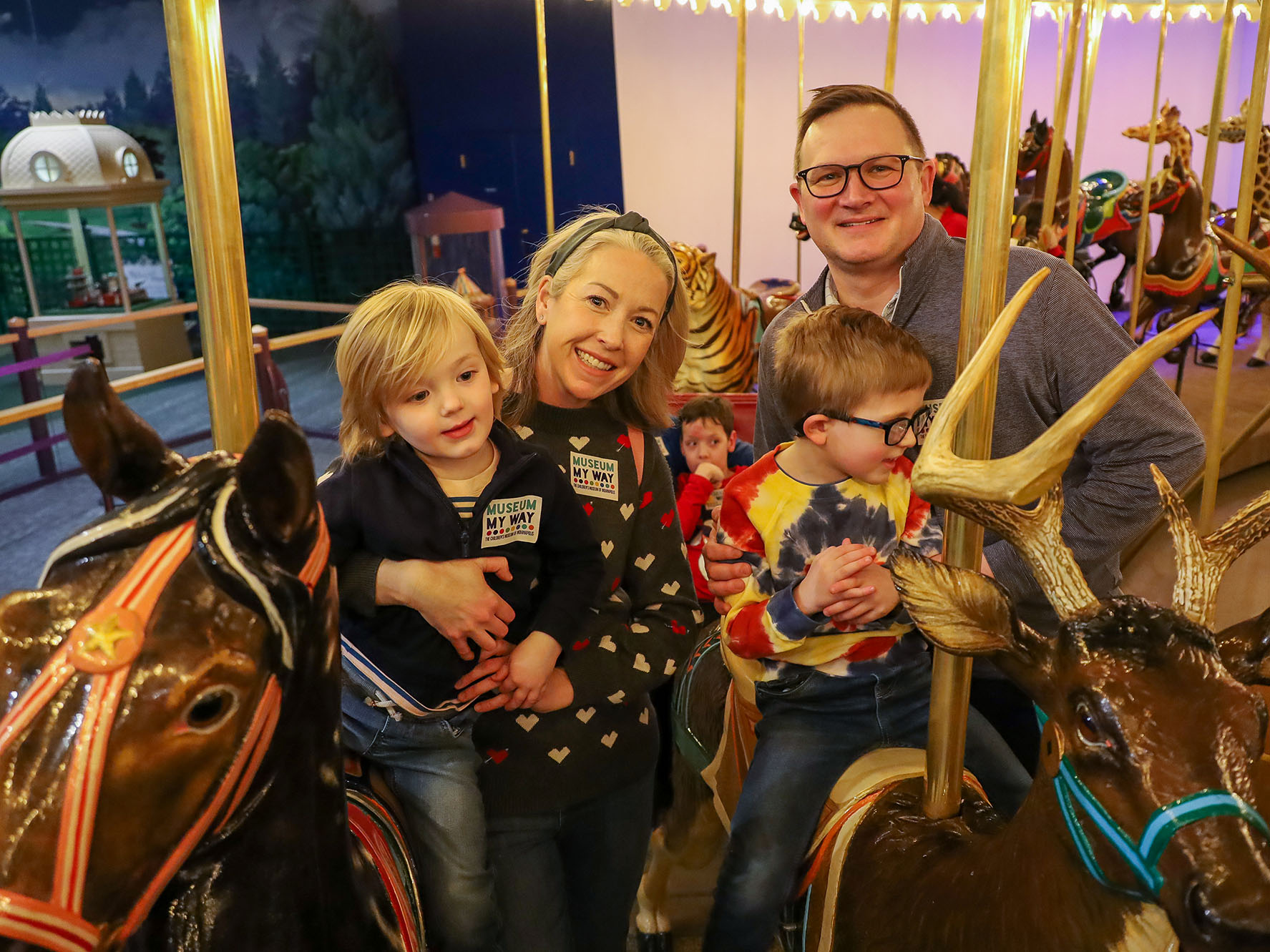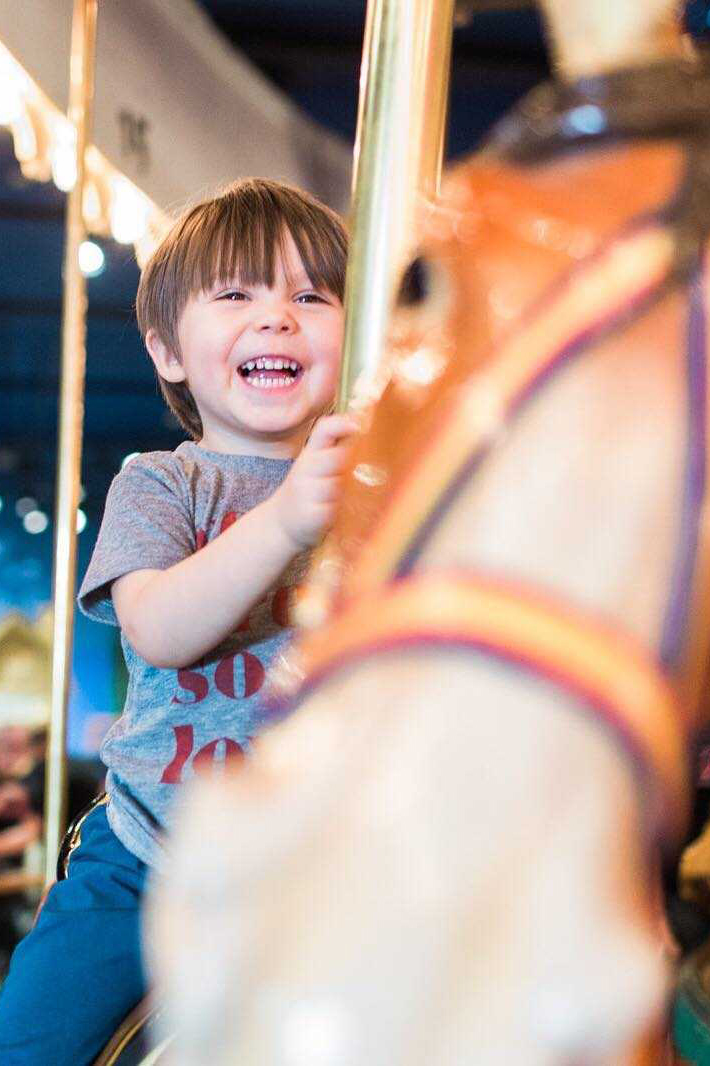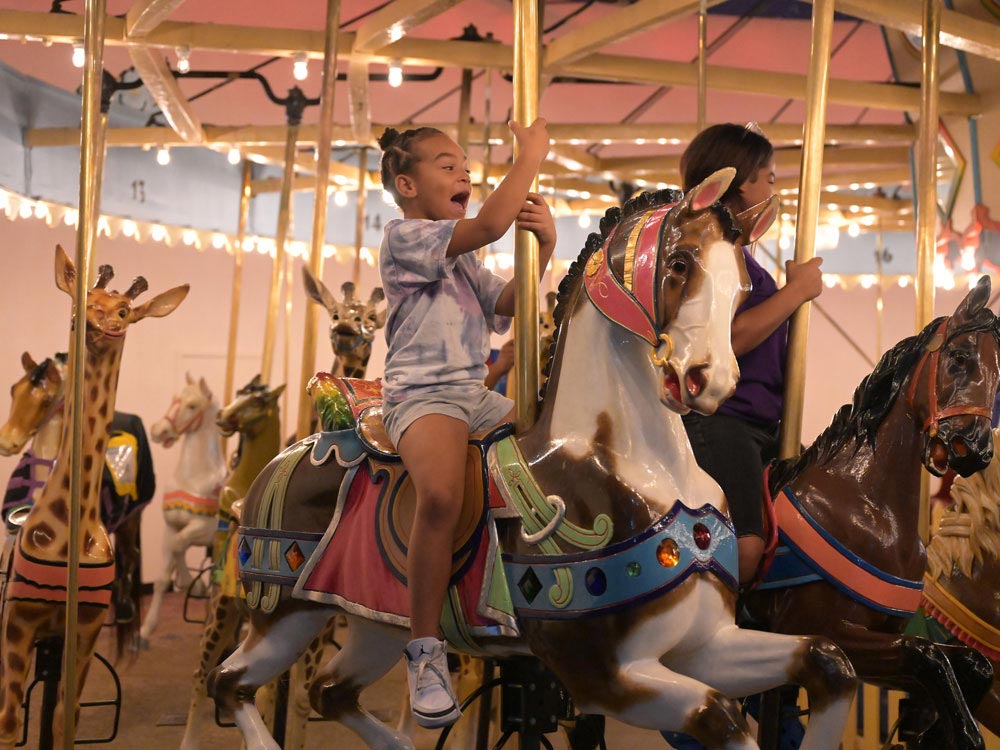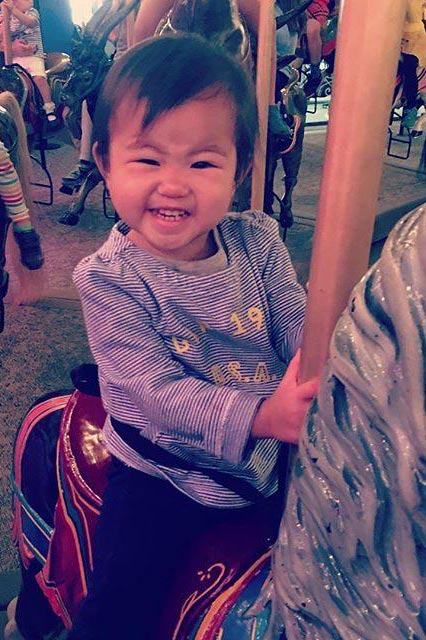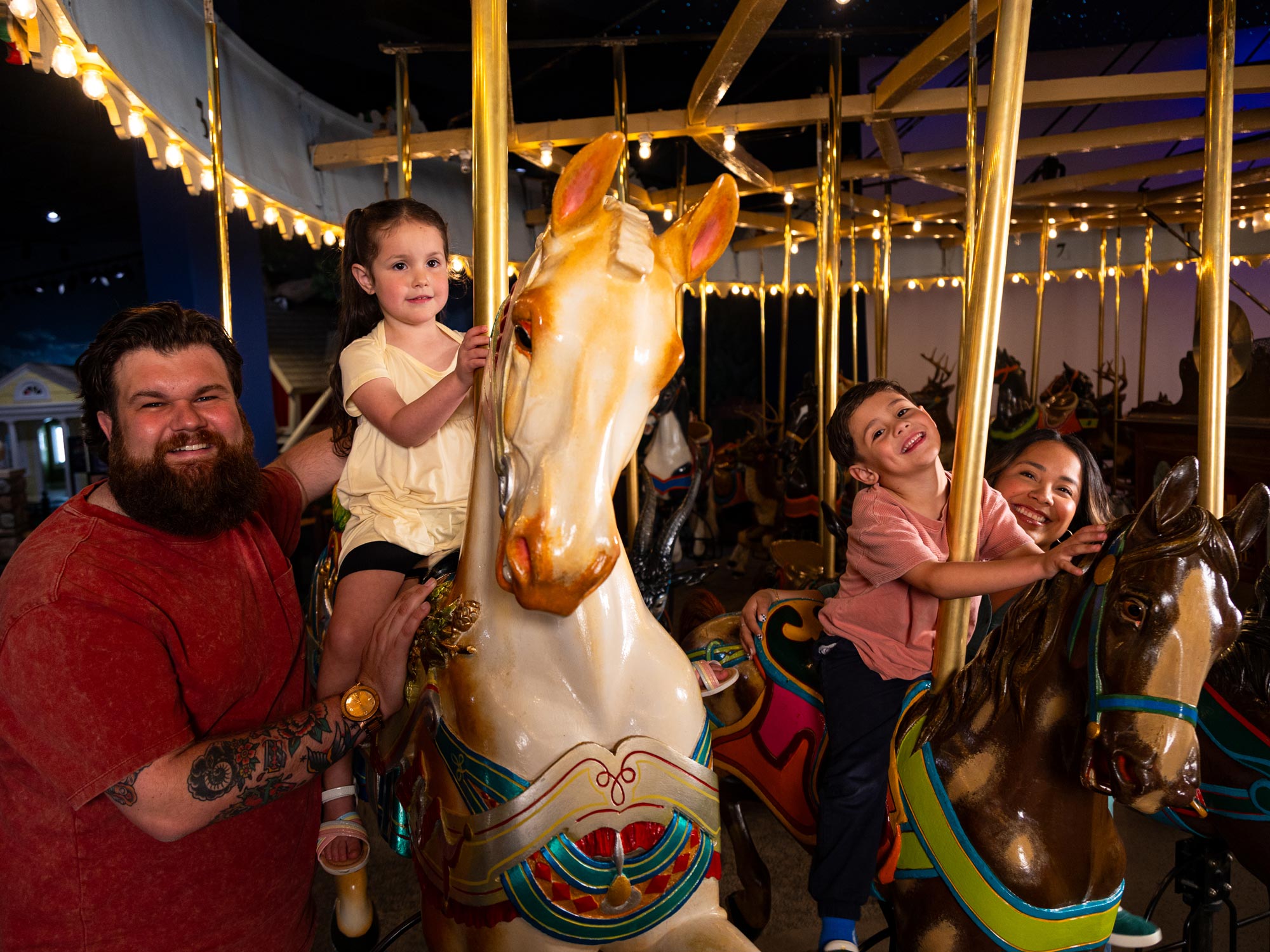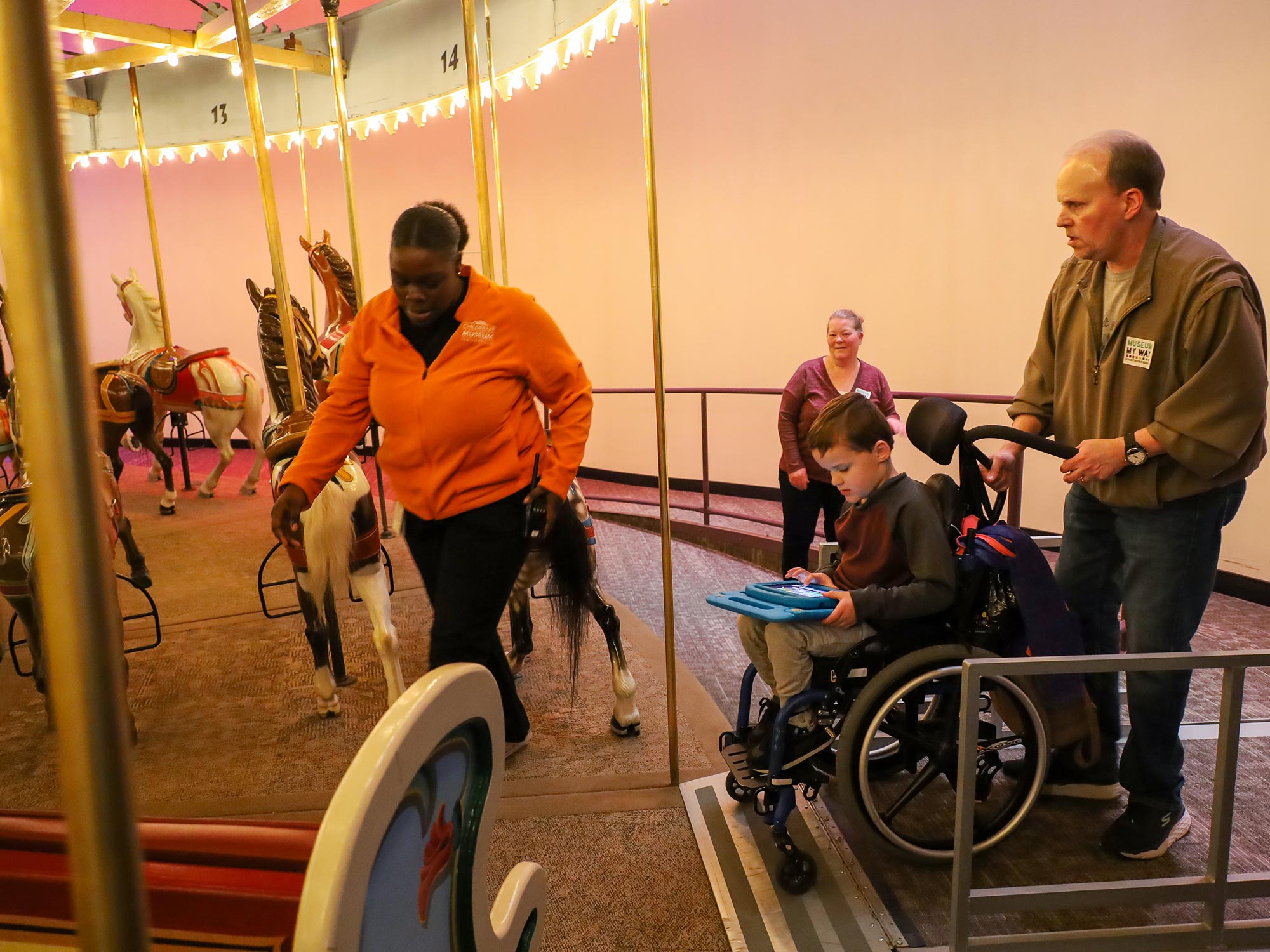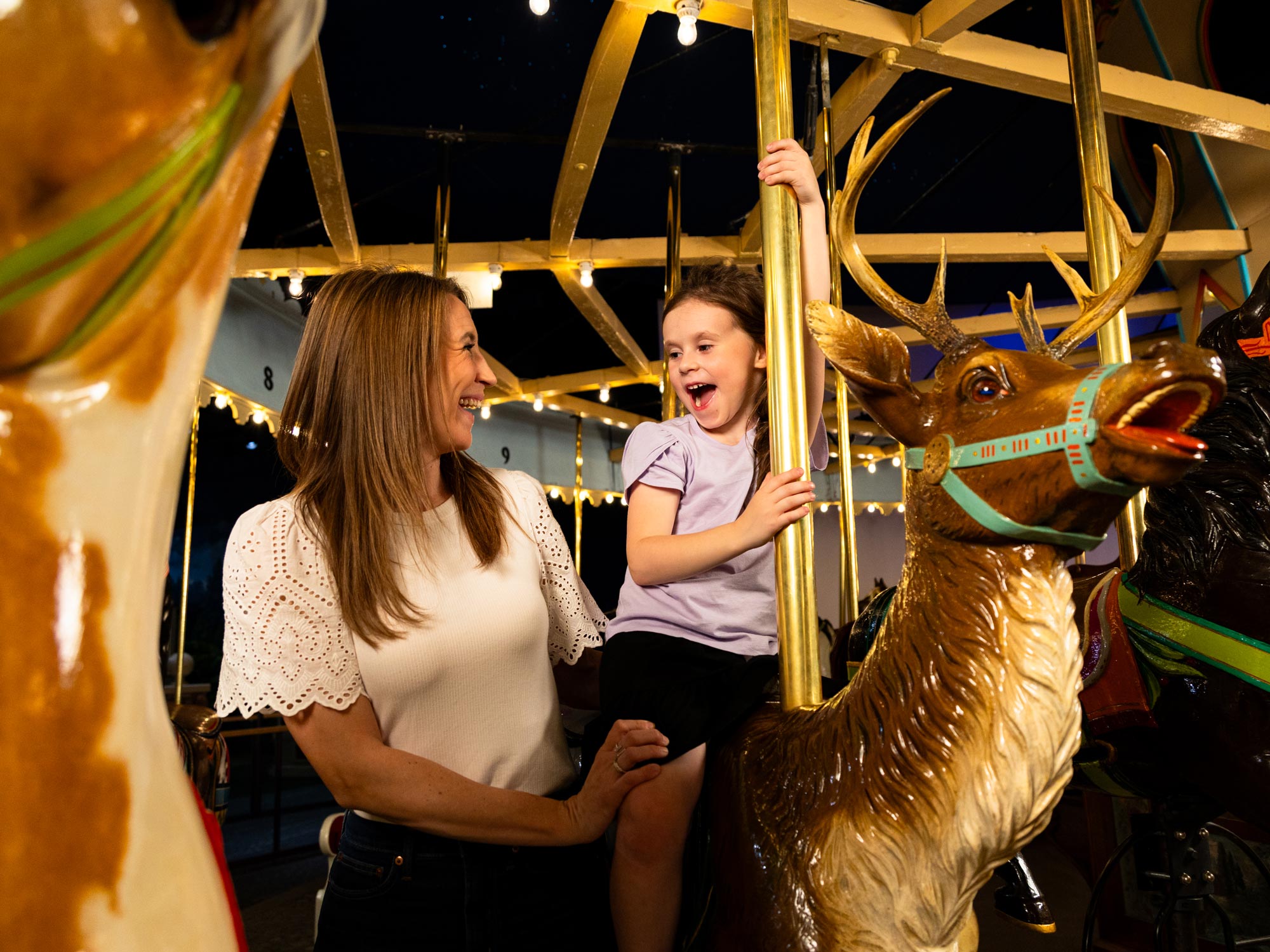Generations of Change: The Cheatham Family and Our Beloved Carousel
Generations of Change: The Cheatham Family and Our Beloved Carousel
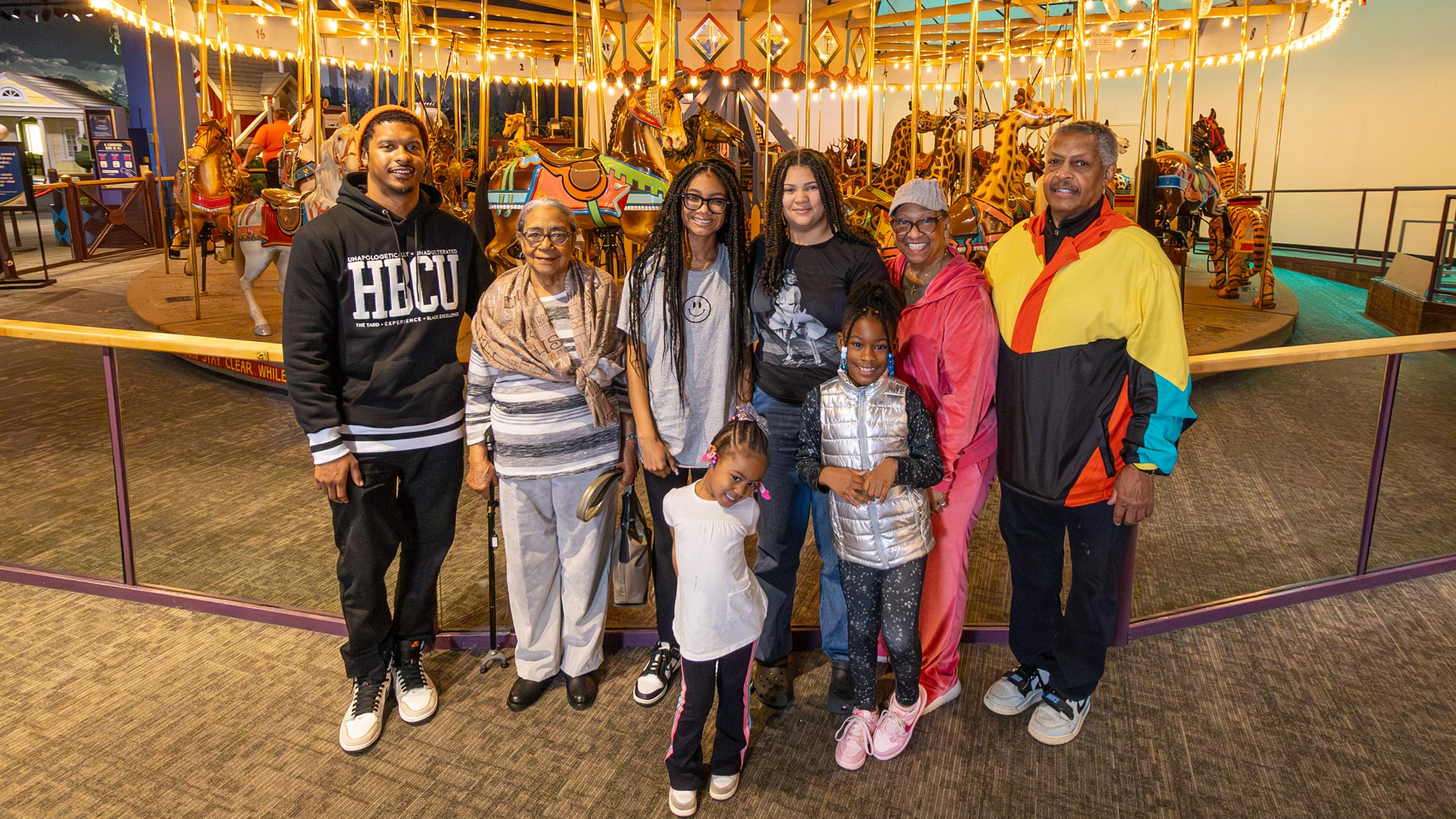
“My favorite memory (of the Carousel) would probably be…
when my sister was making jokes and we were looking at the stars.”
Aleyah Cheatham
“My favorite memory of riding the Carousel is doing it with
family —having people on there with me.”
Alaiah Brown
Our beloved Carousel has sparked creativity, fueled dreams, and served as a core memory for many generations since it was built in 1917. For more than 50 years, guests of The Children’s Museum of Indianapolis from all paths of life have delighted in the magical—and potentially dizzying—caravan of more than 40 wood-carved horses, goats, giraffes, deer, a lion, and a tiger as they parade around to the oom-pah-pah, oom-pah-pah of a classic Wurlitzer band organ. It’s a highlight of any visit to the museum.
 A Checkered Past
A Checkered Past
The Carousel was built for an amusement park located adjacent to the White River in Indianapolis. Its original home—White City Amusement Park—ultimately became Broad Ripple Park. Many families enjoyed riding the Carousel while it was in the park—but only if they were White. For many years, Jim Crow segregation signs prohibited Black families from visiting the park. Children like Eric couldn’t ride the Carousel because of the color of their skin.
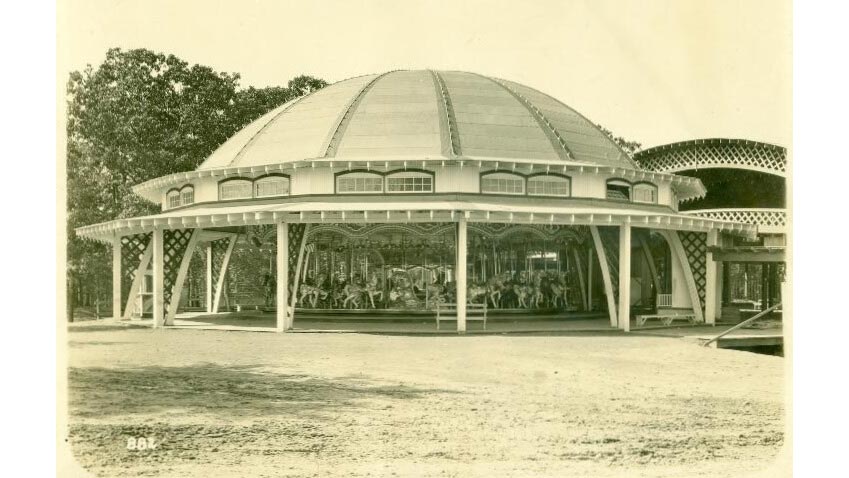
While at the park, the Carousel fell into disrepair. In 1956, the deteriorating roof of the Carousel’s pavilion collapsed, destroying the ride’s operating mechanism and scenery panels. The tangled metal and once-jaunty wooden animals were hauled away and ultimately lost in a storage shed until the museum’s director Mildred Compton embarked on a decade-long mission to rescue, restore, and revive the Carousel animals. When we opened our current facility in 1976, the Carousel was waiting for wide-eyed children whose only worry was whether they would ride a jumping horse or one of the stationary animals.
 A Joyful Present
A Joyful Present
“Anytime you get the opportunity to do something that you haven’t experienced before,” Eric explained, “that’s a positive feeling.”
“I was just so happy to have all the four generations
and that those under me could be comfortable
in coming and enjoying it so much.”
Ernestine Cheatham
We recently brought four generations of the Cheatham family to The Children’s Museum to celebrate nearly 50 years of the Carousel being available to all children who want to ride.
 A Hopeful Future
A Hopeful Future
Members Get MORE!
In addition to a year of unlimited visits to The Children's Museum, members can ride the Carousel for free!
